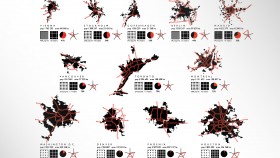Publications
This Policy Brief defines and describes the Tor-York West megazone (TYW), one of three regionally, provincially, and nationally significant employment zones identified in the Neptis Foundation report Planning for Prosperity.
Author(s):
Report (2017)
This Policy Brief defines and describes the Tor-York East megazone (TYE), one of three regionally, provincially, and nationally significant employment zones identified in the Neptis Foundation report Planning for Prosperity.
Author(s):
Report (2017)
This report takes a closer look at the Airport Megazone, one of the three suburban employment megazones identified in the 2015 report, Planning for Prosperity, and the second largest concentration of employment in Canada.
Author(s):
Report (2016)
In August 2014, newspaper headlines trumpeted the “Manhattanization” of Toronto. City Council, in the span of two days, approved 18 new high-rise apartment and office buildings in downtown Toronto, on top of 70,000 residential units already approved for construction. But what happens in downtown Toronto is only a small part of a much larger story of growth across the Greater Toronto and Hamilton Area (GTHA).
Author(s):
Brief (2015)
This report compares the 2001–2011 growth patterns of the Greater Toronto and Hamilton Area, where growth continues mainly on greenfields, and Metro Vancouver, which grew mainly through intensification, especially along frequent transit corridors.
Author(s):
Report (2015)
Neptis has prepared this discussion paper to answer three questions. (1) How does the Growth Plan for the Greater Golden Horseshoe work? (2) Is the region running out of land for development? (3) Have development patterns changed since the Plan was established? The findings are intended to contribute to the 10-year review of the Plan.
Author(s):
Report (2015)
Smart pricing – with zone fares, integration with GO, and lower off-peak fares – could be structured to create more winners than losers.
Author(s):
Brief (2014)
There are important questions that need to be asked, including what each provincial leader or mayoral candidate will do to bring the 416 and 905 together as one region to make transportation decisions that will benefit us all.
Author(s):
Brief (2014)
This report analyses the business cost for each major component of Metrolinx's Big Move, the transit plan for the Toronto Region.
Author(s):
Analysis (2013)
The Neptis Foundation has collaborated with Edward J. Levy to publish this history of rapid transit proposals for the City of Toronto.
Author(s):
Books (2013)
Effects of retail on transportation patterns
Author(s):
Report (2009)
Urban Growth Centres and transit corridors are central to the Places to Grow plan, this report traces the importance of these two concepts historically while highlighting facets that contribute to the making of successful nodes and corridors.
Author(s):
Report (2007)
Most people who live and work in the Toronto region assume that housing and travel costs vary according to where one lives. But if so, how exactly does the pattern play out in the region? Does one save, overall, by living in the suburbs?
Author(s):
Report (2004)
This is the ninth in a series of nine issue papers commissioned by the Neptis Foundation for consideration by the Central Ontario Smart Growth Panel established by the Government of Ontario.
Author(s):
Analysis (2003)
As part of the Portrait of a Region series, this study is based on the Transportation Tomorrow Survey, a survey of daily travel patterns by residents of the Greater Toronto Area and Hamilton, conducted every five years. The study shows trends in commuting and other travel, automobile ownership, the use of automobiles vs. other forms of transportation, and the relationship of transportation networks and patterns to urban form.
Author(s):
Report (2000)
















